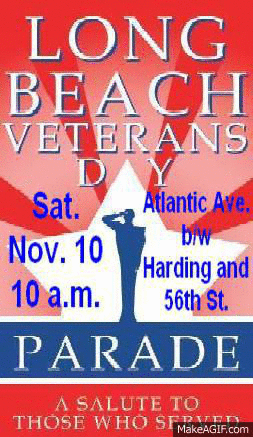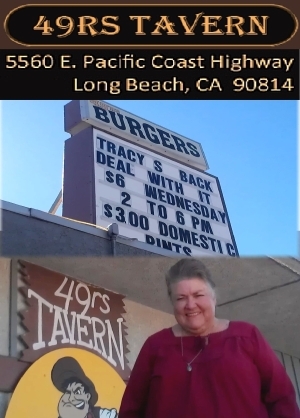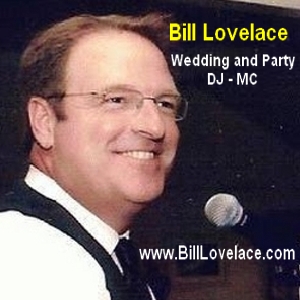| (Nov. 14, 2012) -- At its Nov. 13 meeting, the City Council voted 7-0 (Andrews exited early, DeLong absent for entire meeting) to erase budgeted funding for ShotSpotter or other gunfire location technology and use the oil revenue for LBPD overtime.
The action reverses Council approval a little over a year ago of an item brought by then-Councilman Garcia (joined by Councilmembers O'Donnell, DeLong and Andrews) that allocated oil revenue to fund items including [Oct. 2011 agendizing memo text] "Shotspotter System: $350,000. The Shotspotter gunshot detection system would be a valuable tool to assist the Police Department in responding to gun incidents and other types of crime."
Vice Mayor Garcia held no hearings of the Public Safety Committee that he chairs on eliminating funding for the gunfire location technology he advocated in Oct. 2011 prior to co-agendizing the item to remove its funding in Nov. 2012.
Several Councilmembers said the $350,000 sum (from "one time" oil revenue) was needed for LBPD overtime because the currently budgeted overtime sum appears to be insufficient. The currently budgeted overtime sum resulted from a Sept. 4, 2012 Council voted action.
LBPD Chief Jim McDonnell told the Council that the $350,000 budgeted from oil money would cover only small portion of city with ShotSpotter, less than what's needed, or a pilot project.
Would the $350,000 be better spent on overtime, Councilman Johnson asked Chief McDonnell. Yes, the Chief replied.
Councilmembers [on any Tuesday] could seek to budget an additional sum to provide needed overtime and also provide ShotSpotter, but no Councilmember has proposed this...although several acknowledged that the overtime budget issue needs to be revisited.
There were no public speakers on the item, which was agendized by Councilman Patrick O'Donnell and Vice Mayor Robert Garcia. Parts of O'Donnell's 4th district and Garcia's 1st district include areas that experience gunfire at significantly higher rates than other parts of LB. Councilman Andrews, whose district is also impacted by shootings, exited the Council meeting prior to the item.
Long Beach had 235 reported shootings in 2011; the map below includes shootings up to Nov 14; Google's map system stopped adding locations on a single map at 200.
View 2011 shootings, Long Beach, CA in a larger map
Data source: LBPD. Map independently created for LBReport.com by LB resident Jennifer Gomez
A number of law enforcement agencies (including a portion of the Los Angeles County Sheriff's Department's jurisdiction and most recently the City of Chicago) are using the "Shotspotter" audio/computer triangulation system. Other firms reportedly also offer different or competing gunfire location systems.
Following a series of stories by LBReport.com on the budgeted but undeployed gunfire location system, on Oct. 25, 2012, LBPD Administration Bureau Chief Braden Phillips provided us with this status update:
The City of Long Beach remains interested in acquiring a gunfire detection technology. City Management and the Police Department have engaged in exploratory discussions with various vendors who provide the technology to discuss goals and constraints that may factor into the City's decision to invest in a product. These meetings have been invaluable in the search for a system that will be compatible with the City’s sprawling urban environment. At this time, a gunfire detection technology that meets these preliminary objectives does not exist. Long Beach will continue to actively monitor this emerging technology for future use in the City.
In a response invited by LBReport.com, ShotSpotter Senior Vice President Gregg Rowland replied (via email:
ShotSpotter solutions, including the hosted, subscription-based service ShotSpotter Flex?, are the only wide-area acoustic surveillance gunshot detection, alert and analysis solution in the world. Our company possesses more than 25 US patents that are the result of nearly two decades of innovation in the area of acoustic gunshot location technology.
Unlike video cameras or other gunshot detection systems that require line-of-sight to work and only operate within a small radius (100-200 meters around a single sensor), ShotSpotter delivers complete surveillance of the entire coverage area, detecting incidents and alerting law enforcement to gunfire and other explosive events anytime and anywhere they occur.
SST has more than 80 ShotSpotter installations in four countries, and is in more than 75 US cities, including Washington DC, Boston, Chicago, San Francisco, Oakland CA, Milwaukee, Minneapolis, Kansas City MO, Springfield MA, Newark NJ and Omaha to name a few. We have coverage areas in cities up to 20 square miles and many that are 5-8 square miles. Covering large dispersed urban environments is our expertise.
At a September 25, 2012 meeting of the East Anaheim Street Business Alliance, LBPD Chief Jim McDonnell fielded an audience question about implementing audio gunfire technology in Long Beach as follows [after speaking highly about LBPD technological innovations]:
Audience member: ...Are there microphones in the city for triangulation of gunshots?
Chief McDonnell: We're working with a company on that right now. There are companies out there that do it. There was one that the city was pushing to go to. We've opted to go and look with another one, and we're doing some very cutting edge stuff that has not been done anywhere in the country with this company.
They've asked that we kept it fairly low. They have other applications for it as well. But if we can be a pilot site with some of these advanced companies and be able to get the resources for the City of Long Beach to keep our folks safe at little or no cost so that they can develop their product line, you know, that works out great for us,
A little over a year ago during the Oct. 2011 Council discussion that approved oil revenue funding for ShotSpotter, Councilwoman Schipske questioned whether the sum proposed by Garcia and city management was sufficient. In questioning city management, Councilwoman Schipske extracted an admission that no funds had been included to fund the system's continuing use after the first year...and Chief McDonnell acknowledged it might end up being a one year pilot project.
Records subsequently sought and obtained by LBReport.com under the Public Records Act indicate that in the months that followed, issues apparently arose between LBPD management and representatives of the "ShotSpotter" firm. The documents indicate that the issues led to a high level meeting between LBPD command staff and ShotSpotter reps in early 2012.
With no deployment visible in the months that followed, on April 24, 2012 LBReport.com asked LBPD Administration Bureau Chief Braden Phillips where things stood at that time. Chief Phillips indicated that LBPD management was exploring a number of options to see what type of gunfire location system would provide LBPD with the best deal for the dollars available.
On June 12, 2012, Vice Mayor Garcia held only the second meeting this year of the Public Safety Committee he chairs...which didn't agendize the issue of the gunfire location technology. However, there was colloquy on the issue after Committee member Councilwoman Gerrie Schipske asked Administration Bureau Chief Phillips about it.
Chief Phillips replied that LBPD planned a demonstration/validation project of a gunfire-location technology that isn't the "ShotSpotter" system but a similar, cost effective technology that was deployed in Iraq. At the Committee's June 12 meeting, Administration Bureau Chief Phillips stated:
The ShotSpotter technology, the gunfire detection system, is as we said at the time, a very expensive technology for a fairly limited area. We are actively working with a group that has a similar technology that was deployed in Iraq and we're going to be doing a demonstration and validation project with them here shortly that we hope will provide a much more cost effective and even mobile solution that is superior to what we have been looking at in the past.
One of the challenges we have in terms of using that technology is for one year it costs us essentially the equivalent of a couple of police officers, and frankly, I think given the size of the area we would be looking at with ShotSpotter, it's probably going to be more effective for us to get a couple of cops.
On hearing this, Councilwoman Schipske replied that "we need to get that kind of report back to the full City Council because that money was appropriated for that use and perhaps we can kind of take a re-look at that."
Before moving on to other items, Committee chair Garcia also stated:
I just wanted to jump on something that Councilwoman Schipske said. I think that it's important that not just Shotspotter, but the money we set aside for the technology of the cameras, that certainly we need to ensure that that money is being spent on the things that were allocated for it, and if there needs to be a change or a recommendation, I think we can have that discussion, but I think we're kind of anxious as to where those items, and where those dollars are being spent on the technology side. And I think we'd like to have this resolved before we get back to having another discussion about this year's budget, I think ideally.
[The Council's Oct. 2011 vote on allocating oil revenue also included funding for a city website upgrade (sought by Garcia, still being pursued) and $1 million in initial costs for a prisoner-transfer tunnel between the city jail and a new courthouse. As previously reported by LBReport.com, in June 2012, city management proposed (and the Council gave voted approval) to abandon the tunnel project after nearly $1 million had been spent. The result will leave LB taxpayers to pay a continuing cost that management estimates will be a roughly a quarter million dollars annually to convey jail prisoners to proceedings at the new courthouse.]
In August 2012, Mayor Foster and city management proposed a FY13 budget nominally balanced by reducing LBPD overtime from its usual annual level of between $9-10 million to roughly $7 million. After several Councilmembers (including Vice Mayor Garcia) publicly expressed concern that this sum wasn't sufficient, on Sept. 4, 2012 Councilman O'Donnell proposed, and the Council approved, increasing budgeted overtime to slightly over $9 million. However this sum was also apparently short of maintaining current staffing; it led to an LBPD management decision (reported first by LBReport.com) to cut LBPD's gang officers in half.
Cutting the gang unit entirely (proposed in the Mayor/Manager FY13 offered budget) was vocally opposed by residents at several community budget meetings. In the two months since the Council's Sept. 4, 2012 budget vote which resulted in cutting LBPD's gang unit in half, no Councilmember has agendized an item to fully restore LB's previous level of gang officers.
Return To Front Page
Contact us: mail@LBReport.com
|




















